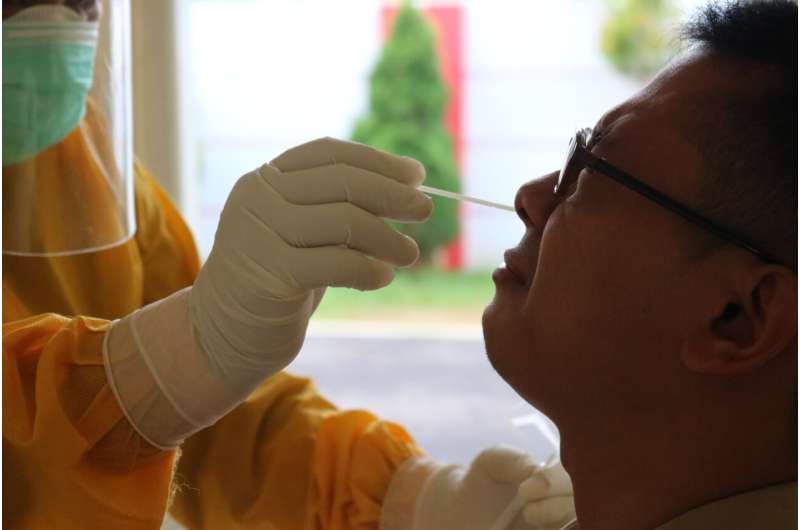
Since the start of the coronavirus pandemic, thousands of nasopharyngeal swabs have been performed in Austria—millions worldwide. Correct technique is essential for diagnosing COVID-19. To assist the correct collection of nasopharyngeal material, a systematic anatomical study conducted at MedUni Vienna proposes specifies guidelines and landmarks and evaluates the potential danger to the brain.
“Inexperienced testers might fail in targeting the nasopharynx mucosa when performing nasopharyngeal swabs to collect material for PCR and antigen tests,” explains study leader Wolfgang J. Weninger, Head of the Division of Anatomy at MedUni Vienna’s Center for Anatomy and Cell Biology, “If the procedure is not performed correctly, material will be taken from the nasal cavity rather than the nasopharynx. In patients with low viral load, this results in shortage of virus material for diagnosis. Infectious people might remain unidentified.”
Published instructions explaining the process of nasopharyngeal swabs are essentially correct. However, the individual anatomy of the nasal cavity and nasopharynx often complicate the collection. The team of anatomists, headed by Wolfgang J. Weninger, provides a process and landmarks, which allow testers to securely and successfully perform swabs.
The suggested procedure is based on a systematic scientific study, which simulated nasopharyngeal swabs through both nostrils of 157 body donors. Advancement of the swab was continuously monitored. The researchers proposed a three-stage procedure that allowed testers to monitor themselves. The procedure was successful in all individuals without pathologies of the nasal cavity, while procedures based on alternative landmarks were only successful in less than 50%.
Is there a danger for the brain?
Source: Read Full Article
